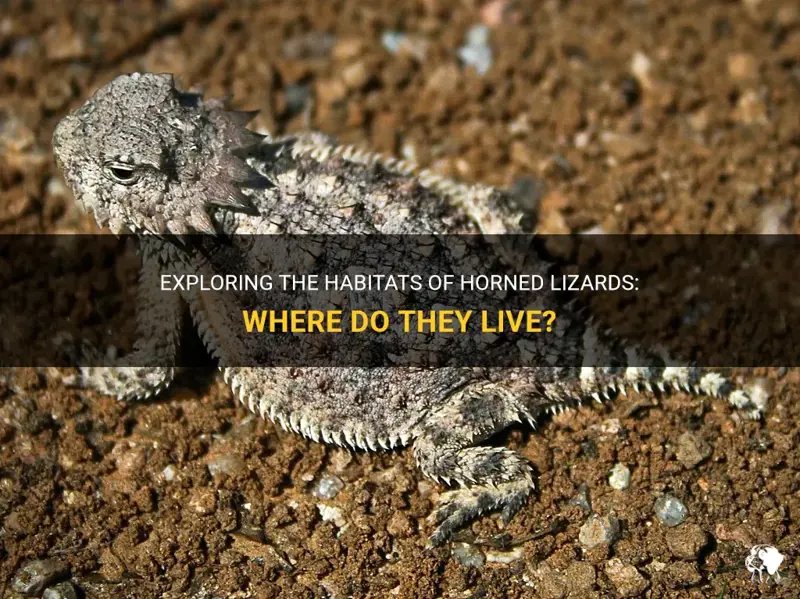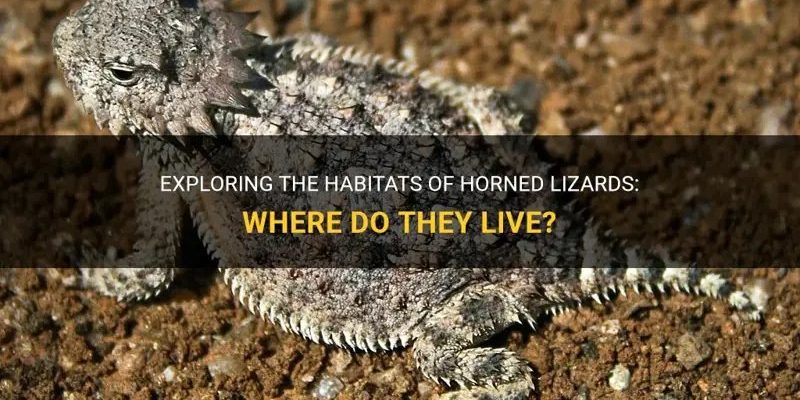
Horned lizards, often called “horn toads” due to their horn-like projections, can be found in various environments across the western United States and parts of Mexico. They thrive in regions that offer plenty of sunshine and the right kinds of vegetation. You might even say they’re like little sunbathers, seeking warmth on rocky outcrops or under the cover of shrubs. But their homes are more than just warm spots; they depend on specific habitats that provide them food, shelter, and protection from predators.
Let’s break down where these unique lizards hang out and what makes their homes special.
Types of Horned Lizards
There are about 14 species of horned lizards, each with its own specific habitat preferences. Some of the most common include the Texas horned lizard and the Western horned lizard. Each species is adapted to thrive in different environments, showing just how versatile they can be.
For example, the Texas horned lizard is often found in open, arid regions with sparse vegetation, while the Western horned lizard prefers sandy soils and areas with low-growing plants. This variation in habitat highlights the adaptability of horned lizards, but it also makes them vulnerable to habitat loss as human activities continue to encroach on their natural lives.
Whether they have spines like tiny swords or flat bodies, these creatures stand out in their homes. Their unique features help them blend in with the environment, making them masters of camouflage.
Desert Habitats
Deserts might seem like an inhospitable place for any living creature, yet these lizards thrive here. The Sonoran Desert and the Chihuahuan Desert are popular haunts for horned lizards. Picture vast stretches of sandy soil dotted with cacti, yuccas, and other desert plants.
In these regions, horned lizards can often be spotted basking in the sun. They take advantage of the warm temperatures during the day to raise their body heat. When it gets too hot, they can quickly retreat into burrows or hide beneath rocks to cool off. This behavior not only helps with temperature regulation but also keeps them safe from predators like birds and snakes.
The desert landscape is also crucial for their diet. Horned lizards primarily feed on ants, which are abundant in these arid regions. They might seem like little buffet enthusiasts, as they can consume hundreds of ants in one day, making their habitat not just a home but a buffet of sorts.
Grasslands and Scrublands
Besides deserts, horned lizards can also be found in grasslands and scrublands. These areas provide a different kind of shelter and food sources. Imagine wide-open spaces filled with grasses and shrubs, offering a perfect blend of warmth and cover.
In grasslands, horned lizards often seek out patches of sunlight hidden among the taller grasses. The proximity to low shrubs or clumps of grass allows them to hide from predators. They also have access to plenty of insects to munch on, which keeps them energized.
Scrublands provide a slightly different atmosphere, often characterized by hardy bushes and low trees. Here, horned lizards can benefit from both the shaded areas and sunny spots, adapting their behavior based on the climate. Their remarkable ability to blend with the environment ensures they can stay safe while hunting for food.
Mountain and Rocky Areas
Now, let’s talk about those rugged, rocky areas where horned lizards can also be found. Many species of horned lizards have adapted to life in the mountains, where rocky outcrops break up the landscape. This habitat not only provides shelter but also a great place to catch some rays.
In these highland areas, horned lizards often use the rocks as sunning spots. It’s like having a favorite sun chair that’s always available! They find crevices in the rocks to hide from predators and can even dig small burrows in the ground to stay cool when it gets too hot.
For them, the rocky terrain provides plenty of hiding spots for their prey. Ants and other insects love to roam among the rocks, giving horned lizards a steady food supply. So, beneath the rugged peaks, a whole ecosystem thrives, showing how adaptable these creatures can be.
Climate Considerations
Climate plays a significant role in determining where horned lizards call home. These lizards prefer warm climates but can be sensitive to extreme weather changes. If conditions get too wet or cold, their populations could dwindle.
For instance, during prolonged periods of rain or unseasonably cold temperatures, horned lizards may find it challenging to thrive. So, they have evolved to seek out areas where they can bask under the sun and enjoy a dry environment as much as possible.
The changes in climate have raised concerns about their habitats. With climate change impacting various regions, the habitats that once supported these lizards may not remain suitable in the future. Understanding their preferred habitats can help conservation efforts ensure that these quirky reptiles continue to enjoy their sunny days.
Conservation and Habitat Loss
Conservation is crucial for the survival of horned lizards. With expanding urban areas and agricultural practices, their natural habitats are being destroyed. This loss of habitat not only affects their ability to find food and shelter but also risks their population numbers.
Many organizations work on habitat restoration to help these lizards thrive. Whether it’s protecting existing habitats or creating new areas that mimic their natural environments, conservation efforts aim to give horned lizards a fighting chance.
These lizards might be small, but they play a role in the ecosystem by controlling insect populations. Protecting them means sustaining the balance of life in their habitats. Plus, who wouldn’t want to spot one of these adorable creatures in the wild?
Horned lizards are truly remarkable creatures that have adapted to a variety of habitats in North America. Whether they’re sunbathing in the desert, hiding among grasslands, or dodging predators in rocky terrain, they all share a common love for warmth and sunshine. Their unique habitats not only provide them with food and shelter but also contribute to the rich biodiversity we see in these regions.
As we learn more about where horned lizards live, we also understand the importance of protecting their natural environments. By ensuring these habitats remain intact, we give future generations the chance to appreciate these quirky little lizards. So the next time you enjoy the great outdoors, keep an eye out for these fascinating reptiles—they might just be sunning themselves nearby!

